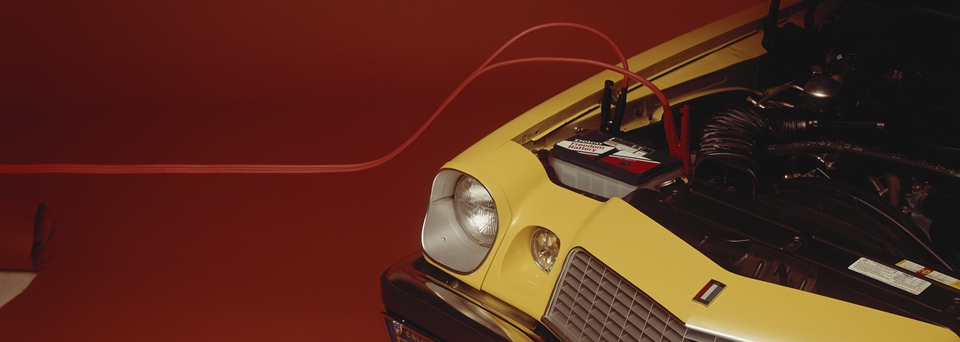
14 Feb Auto Battery Inspection & Maintenance Checklist
 Have you noticed starting your car on cold mornings is getting harder? Did you know that it is common for auto batteries to fail during winter months? Schedule your auto battery inspection to to check the battery type, battery terminals, battery cables, and electrolyte level and avoid being stranded with a car that won’t start. Your auto technician will determine whether they can successfully recharge your car battery or if it is time to replace it. First, let’s first determine which battery type your vehicle has. Then, we will explore how auto battery maintenance can improve car battery performance and lifespan.
Have you noticed starting your car on cold mornings is getting harder? Did you know that it is common for auto batteries to fail during winter months? Schedule your auto battery inspection to to check the battery type, battery terminals, battery cables, and electrolyte level and avoid being stranded with a car that won’t start. Your auto technician will determine whether they can successfully recharge your car battery or if it is time to replace it. First, let’s first determine which battery type your vehicle has. Then, we will explore how auto battery maintenance can improve car battery performance and lifespan.
Auto Battery Types
The auto battery type you choose can significantly impact your vehicle’s performance. Each design has a different performance range, varying slightly in voltage. However, their construction determines how quickly they charge and how much energy they store. The car battery type can also affect the optimum temperature range for operations. Therefore, purchase a battery that meets the manufacturer’s power requirements and climate recommendations. Getting a regular auto battery inspection ensures optimal performance and safety for your car.
Wet-Cell Batteries
A traditional auto battery is known as a flooded-cell battery or a wet-cell battery. Six cells within the outer shell are lead plates filled with a liquid electrolyte sulfuric acid solution.
Valve-Regulated (VRLA)
Valve-regulated batteries are variants of the no-maintenance type of car battery. They use valves or plugs to keep the electrolyte from moving to another part of the battery. They incorporate several styles, including gel-cell and AGM types. VRLAs are popular because they are much harder to disrupt by movement than the older wet-celled designs.
Gel-Cell Batteries
Gel-cell batteries are a high-end design. They gain the advantages of a fluid electrolyte without the instability and chance of spilling. Gel cell batteries stay stable at all temperatures, making them more consistently efficient in different driving climates.
Absorbent Glass Mat Batteries (AGM)
These batteries use glass mesh to absorb the electrolyte. They function similarly to wet cell batteries, except the glass mat completely absorbs the electrolyte. This prevents spills and allows the battery to be in any orientation.
Auto Battery Maintenance Checklist
Regardless of your vehicle’s battery type, following this routine maintenance checklist can significantly prolong the life of your car battery.
Battery Terminals
Battery terminals are the lead posts commonly found on the top of the 12-volt battery case in your car’s engine compartment. A few manufacturers use batteries with battery terminals located on the side of the battery case. These posts can accumulate scale and rust, both corrosion forms. Regularly clean excess corrosion to prevent performance issues with your battery. Apply a simple baking soda and water solution to the terminals and lightly scrub with a brush. Repeat this process to remove the corrosion entirely, then thoroughly rinse the posts with cool water.
Battery Cables
Battery cables attach to the battery terminals and transfer the electric energy stored in the battery to the necessary components to start the engine and power various electric devices within the car. The cables must be securely attached to the terminals. As outlined above, clean any corrosion on the cable connectors.
Electrolyte Level
When the electrolyte level becomes low in traditional wet-cell batteries, it can be monitored and serviced. If the electrolyte solution becomes too low, the battery cannot hold a sufficient charge to operate. If your auto has a ‘no maintenance’ battery, adding more distilled water is impossible when the electrolyte levels get low. In this case, closely monitor your battery and recharge it when it falls below the required 12.6 volts.
Auto Battery Life Cycle
Generally, an auto battery will last 3 to 7 years with proper care and maintenance. However, many factors can affect the life cycle of your vehicle’s car battery. For example, extreme temperatures (hot and cold) can shorten auto battery life. Improper maintenance, aftermarket electronic accessories, and frequent short trips can all lead to a shortened battery life cycle. As their charge gets low, car batteries lose their ability to provide enough electrical energy to start the engine.
Here are a few ways to prolong the life of your auto battery:
- Drive for 20 minutes (or more) without turning off the engine at least once a week.
- Turn off and unplug electronic devices (including phone charges) before turning off the engine.
- Check that the headlights, running lights, and interior cabin lights are off before exiting the car.
- Test your car battery every six months and recharge if the voltage falls below 12.6 volts.
Auto Battery Inspection & Maintenance
Ron’s Garage will perform auto battery inspection and maintenance on all vehicle makes and models, both imported and domestic. Our ASE-certified technicians use the latest tools and equipment to service your vehicle.
Schedule Your Service
Call us today at (734) 961-4701 or visit us online to schedule an appointment with one of our friendly service agents.

